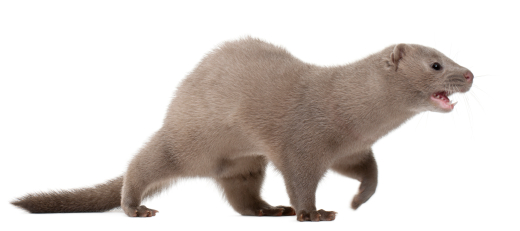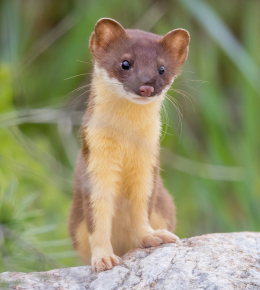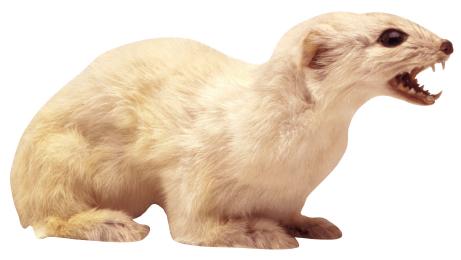
How to Identify a Weasel
Weasels have long, slender bodies with comparatively short legs. This gives them a distinct, rolling gait in which their bodies bend upward, reminiscent of an inchworm. Long necks, small heads, and rounded ears are other characteristic traits. Size varies, but most weasels are 15 to 24 inches long, including their tails. Coloring is usually brown, gray, or black with markings ranging from white to yellow. In the winter, their fur changes to all white. The pests are closely related to ferrets, minks, and polecats and are often confused with these animals.

Where Weasels Live
Adaptable to many habitats, the weasel can be found in wooded areas, along waterways, under tree roots, in piles of rocks, and in high-density plant growth.
There are three species living in North America. Alaska, Canada, the Great Lakes region, and most of the northeast and northwest play host to the short-tailed weasel. Many of these same areas also have the least weasel, named for its smaller size.
Long-tailed weasels, sometimes called bridled weasels for their masked faces, are found from Kansas down into Oklahoma, Texas, and New Mexico.
Damage & Removal
As opportunistic feeders, weasels continually search for food. As ruthless predators of rabbits, reptiles, amphibians, and small rodents such as rats, mice and voles.
Properties with dense rodent populations, such as farms, are especially attractive to the predators. Additionally, poultry cages are tantalizing sources of meals for weasels, as both the eggs and fowl are easy prey in these contained environments.
Sometimes weasels will also nest in equipment left inside barns or garages. To keep the pests out of yards, contact the wildlife experts at Critter Control.
Weasel Images

